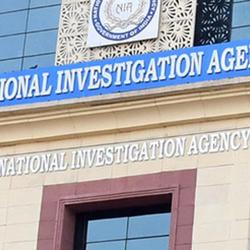Despite of the India's legally-binding Cigarette and Other tobacco products Act (2003) and repeated appeals of India's Health and Family Welfare Minister Dr Anbumani Ramadoss to bollywood film-stars to refrain from on-screen smoking, there seems to be less compliance in the guise of 'creative liberty'.
On 30 June 2008, the Goa Bench of Mumbai High Court issued notice to megastar 'Big B' - Amitabh Bachchan - and others for allegedly violating the Anti-Tobacco Act. Goa-based anti-tobacco organisation, National Organisation for Tobacco Eradication (NOTE), had filed the case against Bachchan and others after billboards showing the megastar smoking a cigar were raised on the Goa highway. Indian Society Against Smoking (ISAS) had also earlier served a legal notice to Amitabh Bachchan through Manu Shresth Mishra, a High Court lawyer practicing in Lucknow, UP. The court, which heard the case on 30 June 2008, issued notice to Bachchan, Anchor Electric appliances, Keshu Ramsay and others.
Two weeks earlier in June 2008, bollywood actor and heart-throb Aamir Khan had confessed on his blog (www.aamirkhan.com) that due to stress he has once again given in to the temptation of smoking. He had said that his nephew Imraan's launch pad 'Jaane Tu... Ya Jaane Na' is the reason behind the stress. "I've begun smoking again, I know you guys are going to kick the shit out of me, my family is already doing that," he had written on his blog: www.aamirkhan.com .
Indian film-star Aamir Khan's explanation of 'stress' as a reason to smoke, is not a reasonable one. Enough body of evidence exists linking tobacco use with life-threatening diseases and disabilities. Moreover public statements, on websites, about smoking by Aamir Khan due to 'stress' will encourage the perception specially among children and youth to begin tobacco use to beat their 'stress'.
Earlier in May – June 2008, the Hindustan Times had carried a front-page photograph of the 'King Khan' Shahrukh Khan, another bollywood actor, who was found smoking in full public view at the much-hyped Indian Premier League (IPL) cricket match series.
Tobacco is reported to kill more than a million people in India alone every year.
"One of the easiest ways to significantly bring down number of children and youth who get initiated to tobacco use in India, without any budgetary allocation for this public health exercise, is to remove depiction of tobacco use in films and TV", had rightly said Dr Ramadoss at the last World Conference on Tobacco or Health in USA.
One of the major influences on the uptake of teen tobacco use is the glamourisation of tobacco use in movies and on television. This has been well documented by comprehensive research studies in India and US. On-screen or smoking in public view by bollywood film-stars will influence young minds to smoke.
In an earlier study done by World Health Organization and Indian Ministry of Health and Family Welfare in 2003 it was revealed that 76% of Indian movies had tobacco use shown in them. In 1991, where 22% of top box office movie hits had lead characters using tobacco on-screen, in 2002, this escalated to 53% tobacco use depiction by lead characters in Indian movies. This study also demonstrated that 52.2% of children in India who had their first smoke were influenced by tobacco use depicted in movies.
A repeat follow-up study conducted by WHO and Ministry of Health and Family Welfare in India on top box office movie hits during 2004-2005 demonstrated that tobacco use depiction in movies has become more aggressive as compared to previous years. During 2004-2005, 89% of all movies analyzed contained tobacco use on screen and 75.5% movies depicted leading stars using tobacco on screen. Moreover 41% of movies screened had clear and distinct tobacco brand placement.
Dr Ramadoss says categorically that stopping depiction of tobacco use in films is an evidence based public health measure, and that is what he has been strongly advocating since May 31, 2005.
India, says Dr Ramadoss, has the world's largest film industry rolling out over 900 films per year. Through cinema theatres, these movies reach 60 million people and through cable television network, they further reach another 70 million people in India. "Influence of cinema is paramount in India" says Dr Ramadoss.
The Cigarette and Other Tobacco Products Act 2003 came into existence since 31 May 2003. Before the Bollywood film-stars, just like any other citizen of India, who if found violating the provisions of the anti-tobacco Act, become likely to be penalized as per the existing legal framework, it is in the interest of the public health and individual's own interests to quit tobacco use and chose health!
Exposure to tobacco use in movies is clearly linked to youth tobacco use. Simply put, more must be done to ensure that tobacco use in movies is removed from films seen by our nation's youth. We have within our power one simple and effective way to jump start the decline in youth tobacco use - delete tobacco use in films from the list of influences that rob our youth of longer and healthier lives by removing tobacco use from movies, unless they clearly depict the negative health effects.
The influence of film-stars on the youth is paramount and it will be more helpful if they debunk the misconceptions about smoking.
On 30 June 2008, the Goa Bench of Mumbai High Court issued notice to megastar 'Big B' - Amitabh Bachchan - and others for allegedly violating the Anti-Tobacco Act. Goa-based anti-tobacco organisation, National Organisation for Tobacco Eradication (NOTE), had filed the case against Bachchan and others after billboards showing the megastar smoking a cigar were raised on the Goa highway. Indian Society Against Smoking (ISAS) had also earlier served a legal notice to Amitabh Bachchan through Manu Shresth Mishra, a High Court lawyer practicing in Lucknow, UP. The court, which heard the case on 30 June 2008, issued notice to Bachchan, Anchor Electric appliances, Keshu Ramsay and others.
Two weeks earlier in June 2008, bollywood actor and heart-throb Aamir Khan had confessed on his blog (www.aamirkhan.com) that due to stress he has once again given in to the temptation of smoking. He had said that his nephew Imraan's launch pad 'Jaane Tu... Ya Jaane Na' is the reason behind the stress. "I've begun smoking again, I know you guys are going to kick the shit out of me, my family is already doing that," he had written on his blog: www.aamirkhan.com .
Indian film-star Aamir Khan's explanation of 'stress' as a reason to smoke, is not a reasonable one. Enough body of evidence exists linking tobacco use with life-threatening diseases and disabilities. Moreover public statements, on websites, about smoking by Aamir Khan due to 'stress' will encourage the perception specially among children and youth to begin tobacco use to beat their 'stress'.
Earlier in May – June 2008, the Hindustan Times had carried a front-page photograph of the 'King Khan' Shahrukh Khan, another bollywood actor, who was found smoking in full public view at the much-hyped Indian Premier League (IPL) cricket match series.
Tobacco is reported to kill more than a million people in India alone every year.
"One of the easiest ways to significantly bring down number of children and youth who get initiated to tobacco use in India, without any budgetary allocation for this public health exercise, is to remove depiction of tobacco use in films and TV", had rightly said Dr Ramadoss at the last World Conference on Tobacco or Health in USA.
One of the major influences on the uptake of teen tobacco use is the glamourisation of tobacco use in movies and on television. This has been well documented by comprehensive research studies in India and US. On-screen or smoking in public view by bollywood film-stars will influence young minds to smoke.
In an earlier study done by World Health Organization and Indian Ministry of Health and Family Welfare in 2003 it was revealed that 76% of Indian movies had tobacco use shown in them. In 1991, where 22% of top box office movie hits had lead characters using tobacco on-screen, in 2002, this escalated to 53% tobacco use depiction by lead characters in Indian movies. This study also demonstrated that 52.2% of children in India who had their first smoke were influenced by tobacco use depicted in movies.
A repeat follow-up study conducted by WHO and Ministry of Health and Family Welfare in India on top box office movie hits during 2004-2005 demonstrated that tobacco use depiction in movies has become more aggressive as compared to previous years. During 2004-2005, 89% of all movies analyzed contained tobacco use on screen and 75.5% movies depicted leading stars using tobacco on screen. Moreover 41% of movies screened had clear and distinct tobacco brand placement.
Dr Ramadoss says categorically that stopping depiction of tobacco use in films is an evidence based public health measure, and that is what he has been strongly advocating since May 31, 2005.
India, says Dr Ramadoss, has the world's largest film industry rolling out over 900 films per year. Through cinema theatres, these movies reach 60 million people and through cable television network, they further reach another 70 million people in India. "Influence of cinema is paramount in India" says Dr Ramadoss.
The Cigarette and Other Tobacco Products Act 2003 came into existence since 31 May 2003. Before the Bollywood film-stars, just like any other citizen of India, who if found violating the provisions of the anti-tobacco Act, become likely to be penalized as per the existing legal framework, it is in the interest of the public health and individual's own interests to quit tobacco use and chose health!
Exposure to tobacco use in movies is clearly linked to youth tobacco use. Simply put, more must be done to ensure that tobacco use in movies is removed from films seen by our nation's youth. We have within our power one simple and effective way to jump start the decline in youth tobacco use - delete tobacco use in films from the list of influences that rob our youth of longer and healthier lives by removing tobacco use from movies, unless they clearly depict the negative health effects.
The influence of film-stars on the youth is paramount and it will be more helpful if they debunk the misconceptions about smoking.
- 8892 reads










Add new comment